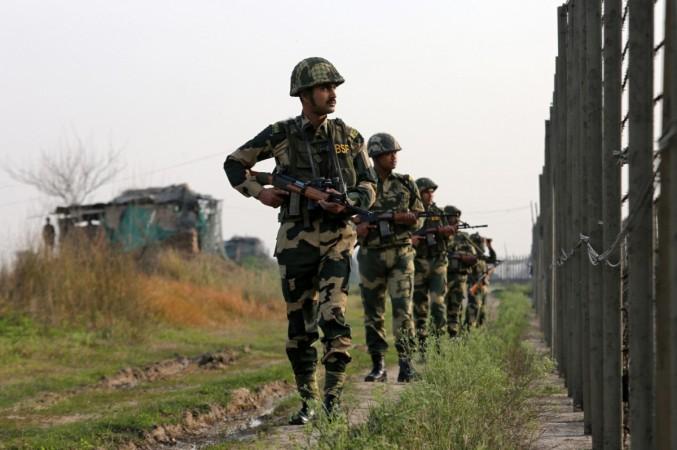![Doklam witnesses fresh Chinese buildup [Representational Image] Chinese construction](https://data1.ibtimes.co.in/en/full/694492/chinese-construction.jpg?h=450&l=50&t=40)
There is huge strategic significance in India's plan to upgrade the mobile networks along the line of actual control (LAC), especially in Arunachal Pradesh, where the Chinese provider is maintaining high signal strength. Indian security agencies believe that it is important to maintain the power of the Indian network although the user density is low in the hilly terrain, media reports say.
The Indian Army recently discussed the issue of the spillover of the Chinese networks with the National Technical Research Organisation (NTRO) on how to bring a secure network in the region through mobile and microwave towers, according to a report on the Economic Times website. Devices on the Indian side of the border automatically pick up the Chinese network.
The Chinese have been building massive road infrastructure on their side of the border for decades now
NTRO engineers recently visited Kibithu, the easternmost sector of the LAC, the report said. While the engineers agreed to raise the matter at the highest level, they explained the technical difficulties in providing high signal strength in remote areas with hostile terrain. Mobile towers or microwave towers that need only small power supplies and project network can be set up along the border, according to them.
Fast troop movement
The army says the region's security is at stake as only the Chinese network is available on the Indian side. "NTRO was informed about the spillover. They explained that the higher the quality of the network, the more secure they are. They also suggested that microwave towers which can project network to areas such as Walong (about 25 km from Kibithu) can be installed," the report quoted an unidentified official as saying.

More than the public, the network will mostly be used by the Indian security forces. While military communication is said to be strong, a wider mobile network will ensure faster sharing of instructions during emergencies. It will also provide soldiers an opportunity to connect with their families as they often stay out of touch for months affecting their morale as snail mail is the only alternative. There is a dearth of adequate coverage of mobile phone towers in the region, according to the engineers. A Bharat Sanchar Nigam Limited (BSNL) mobile phone tower exists in Walong, but it doesn't provide data network, officials said. "Its network comes in only at certain places," an official said, according to the report. Private service providers are reluctant to serve the area because of a lack of economic viability. "There are barely more than 500 locals staying in the area," an official said.
Along with strengthening the mobile network, the Indian strategy also includes strengthening of defense and civilian infrastructure to deter the People's Liberation Army's mischief in the area, according to reports. One of the major inadequacies on the Indian side of the border was road infrastructure required for fast troop movement in case of emergencies. The Chinese have been building massive road infrastructure on their side of the border for decades now. A better road infrastructure means for the Chinese the troop strength close to the border need not be high while India is forced to keep a large number of troops on the Indian side. To rectify this anomaly, India now doubling the lanes of the road between Tezu and Kibithu. The army is also constructing some strategic buildings that would help cut the distance the troops have to cover in case of an emergency.
India has been facing increasing Chinese activity all along the poorly demarcated LAC. Recently, there scuffles between Indian and Chinese soldiers on Dokhlam heights in the trijunction of India's Sikkim state, Bhutan and China, after the Chinese allegedly tried to alter the alignment of the LAC. In the western extremity of the LAC, Daulat Beg Oldi in Leh district of Ladakh has also bee witnessing similar tensions between Indian and Chinese troops.















